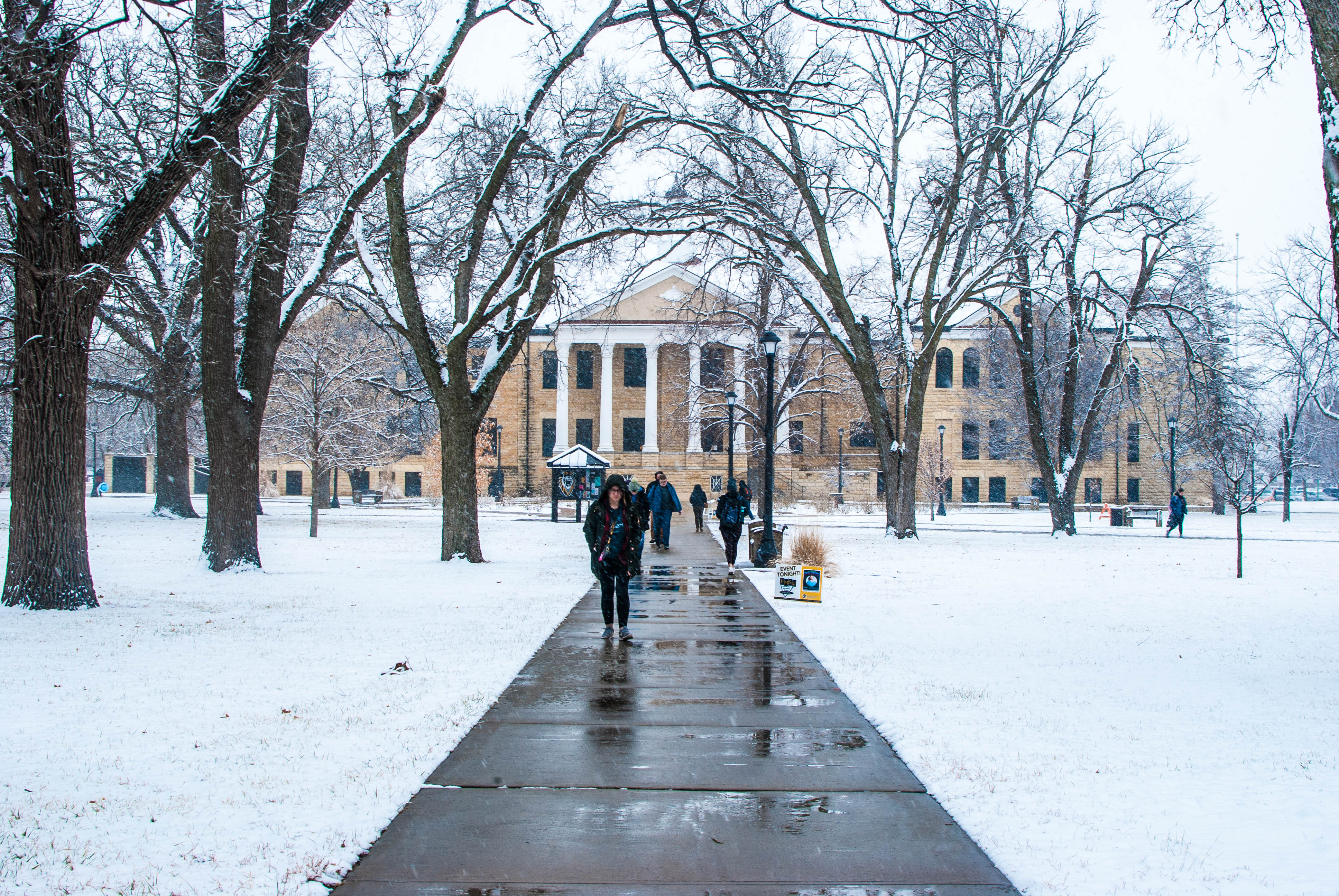File Photo
By ADIA REYNOLDS
Tiger Media Network
Kansas winters are defined by their harsh winds and rapidly dropping temperatures. As a university that attracts a significant percentage of non-Kansan students, many of these people are unprepared for all that Kansas winters hurl at inhabitants. There are three primary questions that students should seek to answer for themselves:
- What clothing do I need to be prepared for winter?
- What are steps I can take to be prepared for colder weather?
- What can I do if I have an emergency in winter (e.g. housing crisis, car breakdown, etc.)?
First, it’s important to have a background knowledge of Kansan winters, and a baseline of student preparedness. The National Weather Service provides data points on the average temperatures in Kansas winters from 1888 to 2011. The last twenty years of this indicate an average temperature of 33.5 degrees Fahrenheit. Such temperatures are bearable, if uncomfortable. The real issues lie in the regular blizzard conditions and the sharp nightly drops in temperature which cause sudden freezes that bleed into the morning after.
But just because wardrobe is important does not mean that it is employed properly. In a survey we conducted, we asked 25 randomly selected students on campus the following questions:
- Are you an out-of-state student?
- What academic year are you in?
- Did you bring winter clothes?
- What items did you bring? (jacket, hat, gloves, footwear)
Proper winter wear is a must. Thick jackets, hats and gloves are what most often come to mind. But many fail to consider the value of waterproof, non-slip shoes. Each of these are essential wardrobe item for the average FHSU student. Of those asked, 16% of students recorded themselves as completely unprepared. But for others, the mere act of holding this conversation alerted them to the fact that they were more prepared than they initially thought. The least commonly considered item was footwear. This is more of a problem on campus than anywhere else in Hays, where many share anecdotes of slipping on the black ice at crosswalks.
Walking to school while on campus is marked by icy conditions. Though the school tries to put down road salt on days with proper forewarning, students must be aware of the frequent ice sheets and black ice that coat the sidewalks and roads.
“My roommate and I would walk to class together last winter,” an anonymous student said. “We had to catch and stop each other from falling more times than I can count.”
Information is the first step towards preparedness. The Kansas government provides a free, informative PDF on winter preparedness and awareness. The PDF covers topics varying from factual risks to applicable tips and tools. Guide 3: Cold Weather Health Risks details how dropping temperatures can lead to hypothermia, compromises to your immune system, and even heart health risks. Guide 4: Cold Weather Preparation can help prevent these impacts if you are caught in the cold. Emergency kits should be stored in cars, and living spaces should be winterized.
If you find yourself lacking in any of these items, particularly cold-weather clothing, the ARC, Goodwill, and Walmart can satisfy your needs for the season. Similarly, Walmart or Dillon’s are the perfect go-to for the aforementioned emergency kits.
Emergency car kits traditionally include:
- Blankets or sleeping bags
- Extra stocking caps, warm socks, gloves/mittens
- Flashlight with extra batteries
- First-aid kit
- Booster cables and windshield brush/scraper
- Drinking water and high-calorie, non-perishable food (trail mix, energy/protein bars)
- Sand or cat litter for traction
- Cell phone adapter/charger
Finally, don’t be afraid to contact University Police if your car breaks down while on campus.

